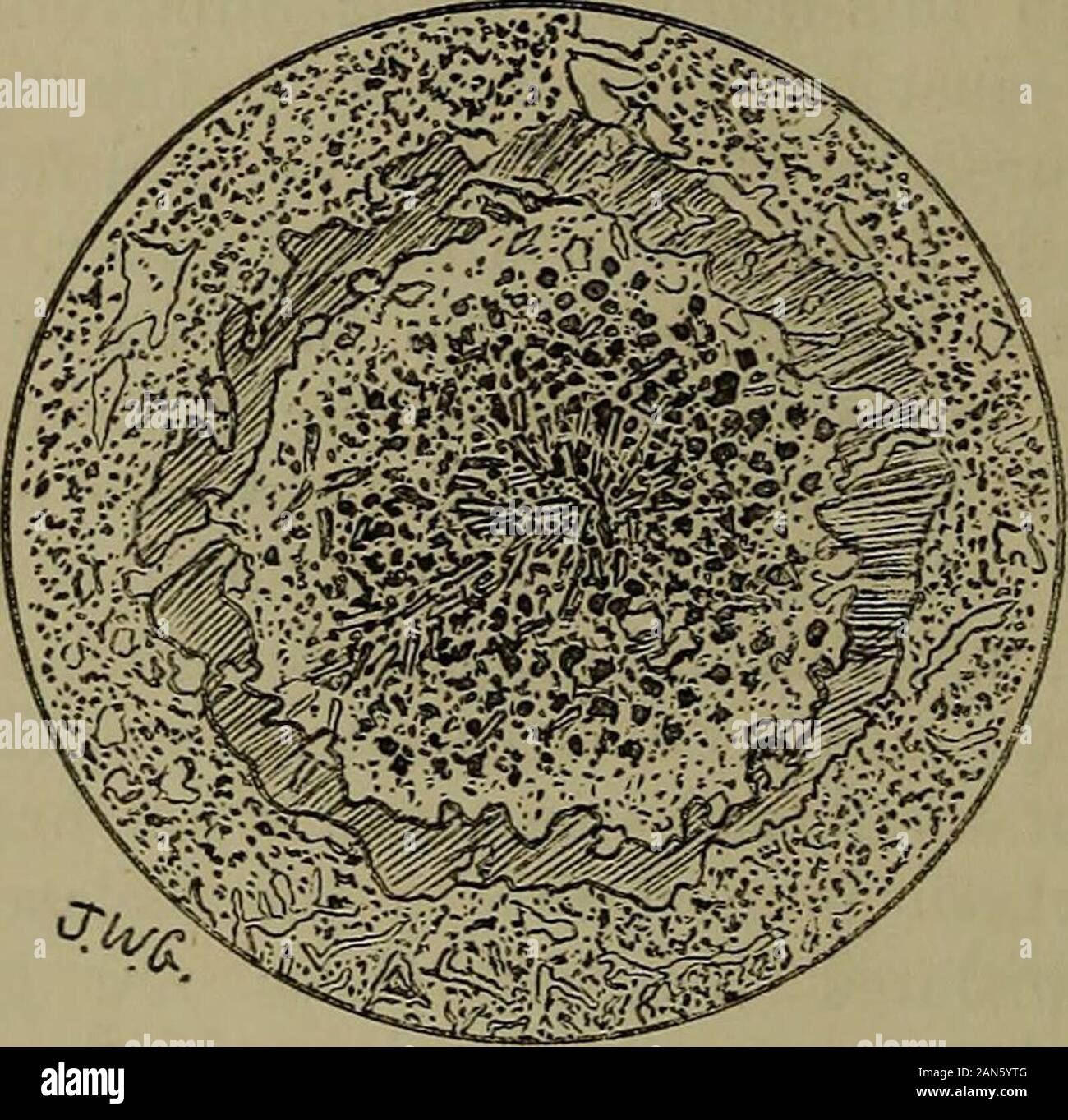The Quarterly journal of the Geological Society of London . s not help much:— Silica 64-33 Alumina 1346 Oxide of iron 8-29 Lime 4*63 Magnesia 158 Potash 1-75 Soda 5-36 99-40 * Geogn. Beschr. Fichtelgebirg. fig. 31. t Ibid. p. 217. Q. J. G. S. No. 185. E 50 MR. J. W. GREGOEY ON THE The paucity of alkaline earths and alumina renders it difficult tosee what combination of oligoclase and augite could give such ananalysis, especially when we have to deduct a little lime andmagnesia for the secondary products in the interspaces. The historyof this analysis, however, does not dispose one to place muc

Image details
Contributor:
The Reading Room / Alamy Stock PhotoImage ID:
2AN5YTGFile size:
7.2 MB (480.8 KB Compressed download)Releases:
Model - no | Property - noDo I need a release?Dimensions:
1597 x 1565 px | 27 x 26.5 cm | 10.6 x 10.4 inches | 150dpiMore information:
This image is a public domain image, which means either that copyright has expired in the image or the copyright holder has waived their copyright. Alamy charges you a fee for access to the high resolution copy of the image.
This image could have imperfections as it’s either historical or reportage.
The Quarterly journal of the Geological Society of London . s not help much:— Silica 64-33 Alumina 1346 Oxide of iron 8-29 Lime 4*63 Magnesia 158 Potash 1-75 Soda 5-36 99-40 * Geogn. Beschr. Fichtelgebirg. fig. 31. t Ibid. p. 217. Q. J. G. S. No. 185. E 50 MR. J. W. GREGOEY ON THE The paucity of alkaline earths and alumina renders it difficult tosee what combination of oligoclase and augite could give such ananalysis, especially when we have to deduct a little lime andmagnesia for the secondary products in the interspaces. The historyof this analysis, however, does not dispose one to place muchconjS.dence in it, and, with such intensely altered rocks, the micro-scope is probably a safer guide than the chemical balance. Pig. 3.—Section of tlie variolitic Diabase, with a large variole ; fromthe pathway to the Colonnade, Berneck. Some Pseudoerystallites Q I occur in the lower part of the figure, (x-yr.—N.B. The numerator represents the original magnification, and the deno-minator the reduction from the size of the field of the micro-scope.). The microscopic examination, however, fully proves the identityof this rock with that of Mont Genevre, though, being older, it hasundergone greater alteration ; the pea-shaped bodies or KnoUchen are shown to be true varioles, composed of a mixture of felsparfibres and augite granules and needles similar to that which occursin the typical variety from the Cottian xilps. Here, then, in this boss of diabase we have the variolite of theFichtelgebirge; but, instead of being a mere contact-product deve-loped at the junction of the diabase and the rocks into which itis intrusive, it occurs in the centre of the igneous rock, at someplaces at least fifty yards from any other rock. According to vouGumbels map this knoll is in the middle of the diabase area; buton the opposite slope of the Celschnitzthal there may be seen, sandwiched between coarse ribs of diabase, some smooth slopes thatindicate the presence of the Devonian *. Pebbles o